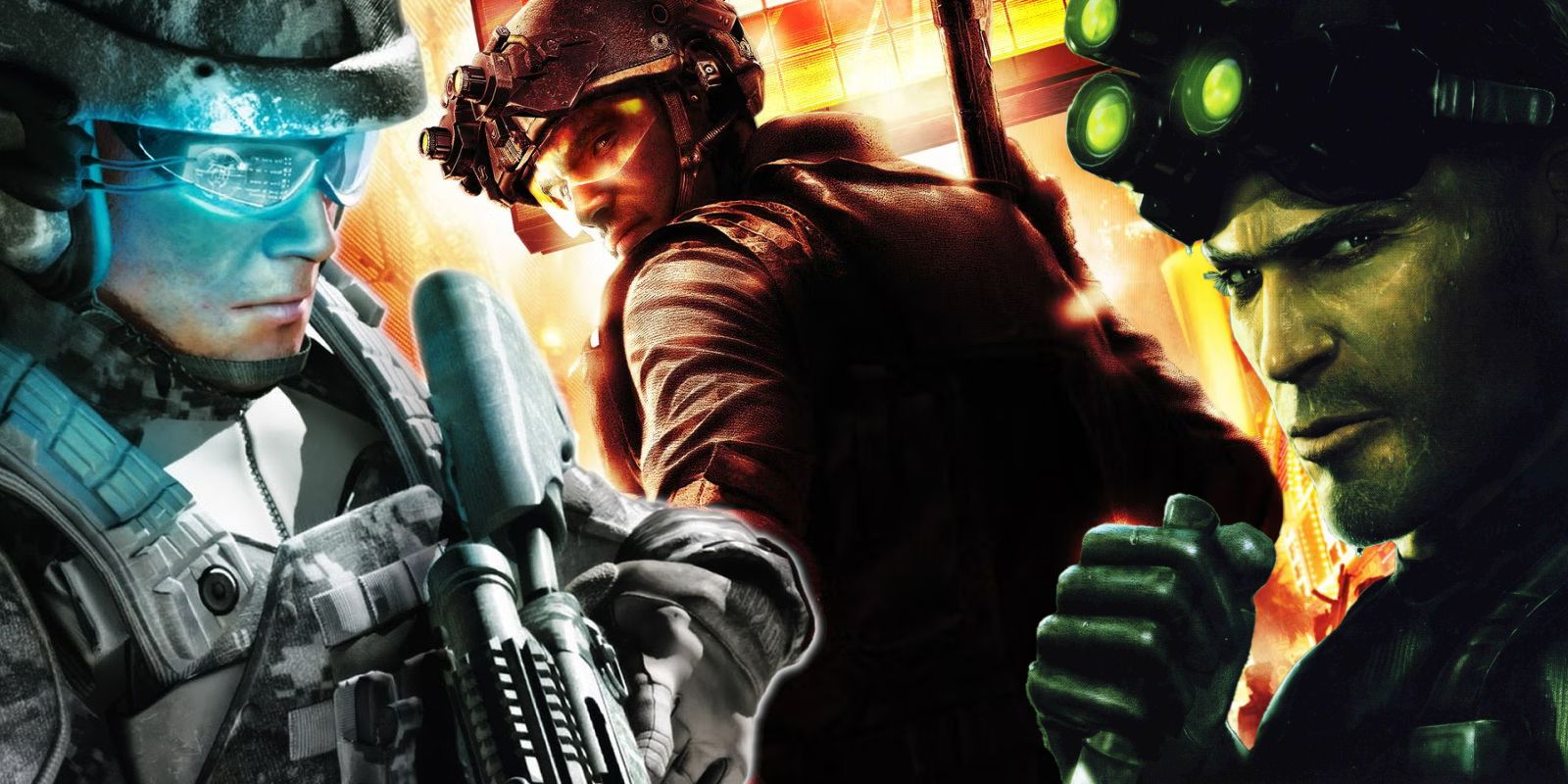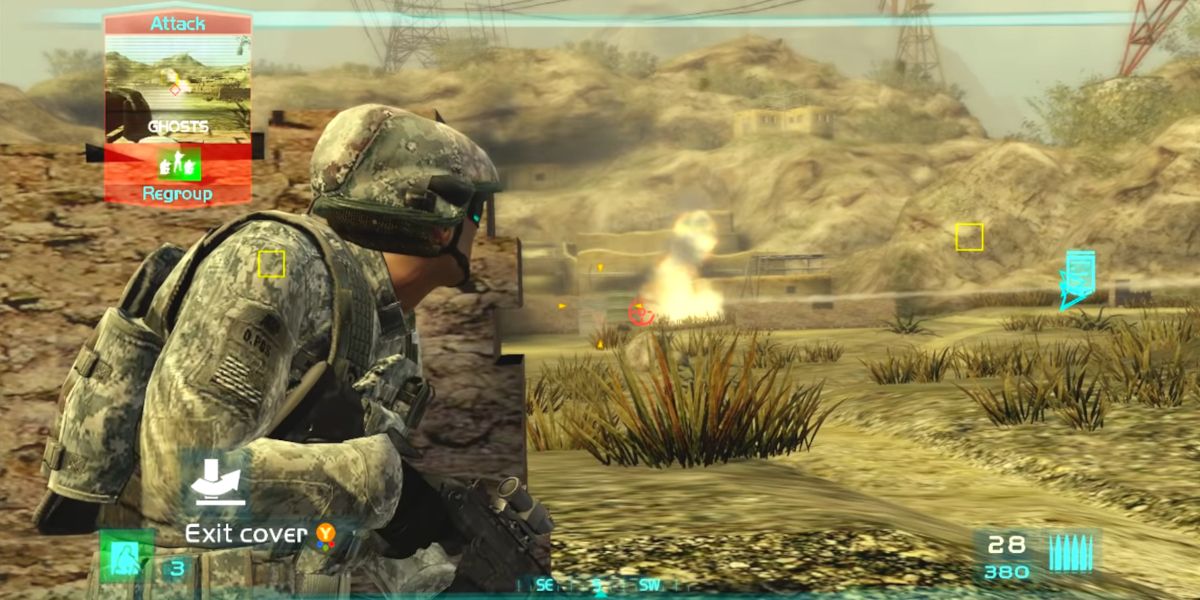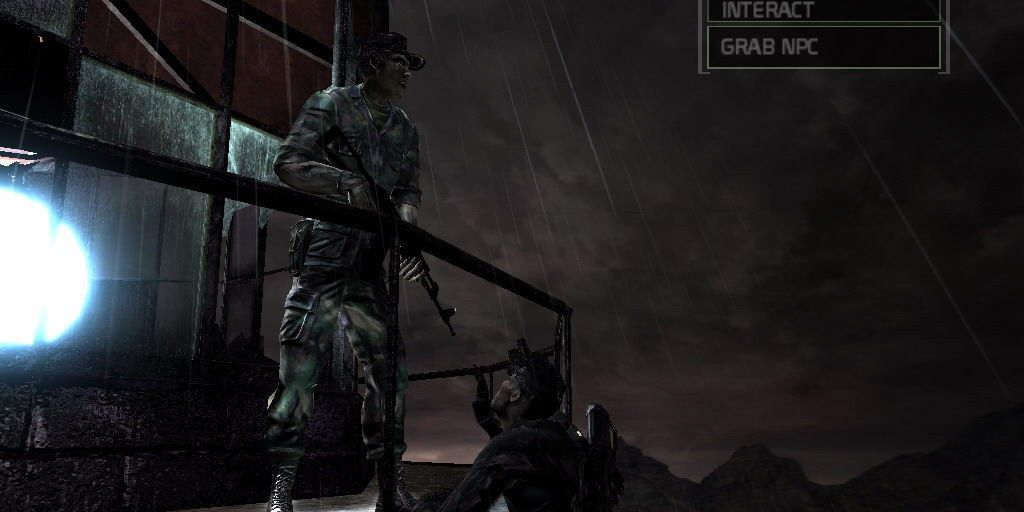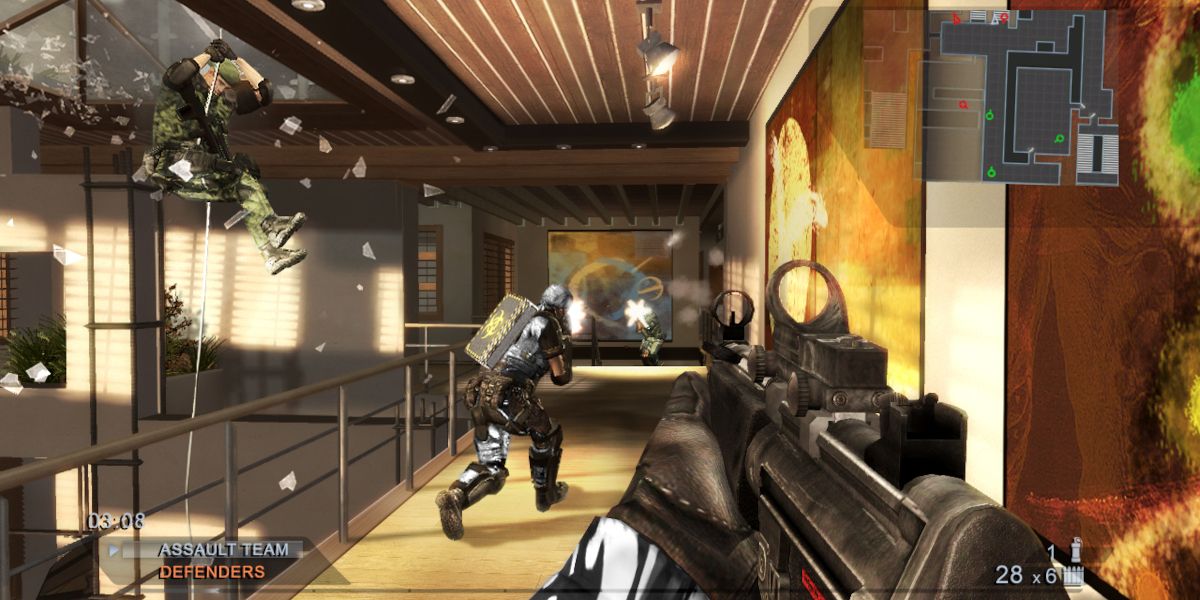In today’s gaming landscape, the Tom Clancy name provokes decidedly mixed responses. While Rainbow Six Siege earned its place as one of the most recognizable multiplayer shooters in recent memory after a rocky launch, its success is outweighed by the major slip-ups of the Ghost Recon franchise and the disappearance of the Splinter Cell games. Even if developer and publisher Ubisoft insists that the franchise is not dead, it’s clear that it’s a shadow of its former self, lacking the confidence, engagement, and experimentation of the games that made up its golden age.
Although Ubisoft is planning to remake Splinter Cell, it would be understandable if some fans didn't get their hopes up. Ubisoft’s design philosophy has changed considerably in the last 15 years, and it's hard to see them recapturing the spirit of the original Splinter Cell trilogy. When those games were released, the Tom Clancy name represented a high bar for contemporary gaming; Rainbow Six and Ghost Recon laid the blueprint for the modern military shooters that would follow, while Splinter Cell was one of the most iconic stealth franchises of all time. Revisiting some of the franchise’s best games may shine a light on how future Tom Clancy games should - but probably won't - approach their material.
Ghost Recon: Advanced Warfighter 2 Was Ahead Of Its Time
Before Ubisoft was cancelling Ghost Recon Frontline or stuffing NFTs into Ghost Recon: Breakpoint, its series of squad-based tactical shooters helped to bring the modern military setting to the gaming mainstream. The Ghost Recon games always centered around a highly trained Special Forces squadron - the ‘Ghosts’ - and emphasized slow, tactical gameplay by giving the player command over a squad of AI teammates. There is no doubt that the series hit its apex of quality and popularity with Ghost Recon: Advanced Warfighter (GRAW) and its sequel, which took the series into the near future even before Call of Duty: Modern Warfare released in 2007.
By ditching the series’ tactical roots completely, Ghost Recon and the Tom Clancy games generally are becoming pointless, and nowhere is this more evident than in the console version of Ghost Recon: Advanced Warfighter 2. By toning down the series’ punishing gameplay, and emphasizing immersion and cinematic storytelling, GRAW 2 remains a rounded experience that hits hard for casual and hardcore players. The design of its UI is clear and easy to pick up, allowing on-the-fly decision-making to flourish through its squad mechanics. Meanwhile, its near future setting never went over the top, allowing it to keep a serious and grounded tone throughout.
Splinter Cell: Chaos Theory Is A Perfect Stealth Action Game
It is difficult to emphasize how important Splinter Cell was to the development of the stealth action genre, taking heavy influence from the gameplay of Metal Gear Solid and infusing it with a grounded, serious tone. The presentation of the original Splinter Cell trilogy is so singular that it’s easy to speculate on how Ubisoft can mess up the Splinter Cell remake. Its graphical presentation, especially in the use of lighting, played with visibility mechanics in ways that no other games had done before. Splinter Cell: Chaos Theory is the most refined and complete game in the series, and its moody atmosphere allows players to feel completely immersed in the role of Sam Fisher.
The nature of Splinter Cell’s gameplay is inherently rewarding; successfully sneaking past or clearing a tough room of enemies takes patience and forethought, ingredients which have been sorely missing from all of Ubisoft’s recent Tom Clancy outings. Chaos Theory is widely considered to be the best game in the series because it brings these elements to the forefront, delivering both an intense campaign and a unique take on multiplayer. However, Splinter Cell returning to the Tom Clancy franchise after eight years isn’t the big announcement that most fans were clamoring for. After Chaos Theory, the series began to forget its roots, leaning more into action-orientated gameplay. While Splinter Cell was still solid even up to 2013’s Blacklist, pinpoint focus on stealth gameplay is what’s needed in a reboot, and there's skepticism that Ubisoft can deliver.
Rainbow Six: Vegas Was The Ultimate Tactical Co-Op Game
In a similar vein to the Ghost Recon series, the Rainbow Six games brought the modern setting to the forefront but transplanted its gameplay from a warfare setting to a counter-terrorist one. The focus on an international anti-terrorism squad allowed Ubisoft to take the gameplay to unique urban locales like city streets and suburban interiors, producing a paranoid, claustrophobic atmosphere. While certainly embodying this spirit, Rainbow Six Siege's bizarre crossovers and cartoonish tone are a world away from Rainbow Six: Vegas, which brought stark realism to an otherwise outrageous setting.
Rainbow Six: Vegas and its sequel pioneered some of the most recognizable aspects of modern shooters, especially loadout kits and character customization. Like Ghost Recon, it also had a focus on squad gameplay, and toned down some of Rainbow Six’s most hardcore aspects but made up for it with an excellent multiplayer suite featuring maps like Villa and Murdertown, which should still bring back memories for those who played Vegas and Vegas 2 at the time. Furthermore, the Las Vegas setting - which could, in the wrong hands, make the serious tone feel frivolous - blended perfectly with the tactical gameplay through stunning visual presentation and realistic level design, making the mishmash of outlandish Ubisoft IP in Rainbow Six Extraction feel like even more of a kick in the teeth.
EndWar Was The Weirdest (But Also Coolest) Tom Clancy Game
For an outlandish Tom Clancy game that still embodies the spirit of the franchise, Tom Clancy’s EndWar is unlike any other. Taking place during a fictional World War III, EndWar innovated on the real-time strategy genre by introducing a unique microphone-based mechanic. Players could command their squadrons by barking orders through their mics; a mechanic that, while messy, was incredibly fun, and goes to show how Ubisoft has lost its flair for innovation in the past decade. The large-scale, frenzied battles of EndWar, which included orbital strikes and electronic warfare, took the Tom Clancy franchise into a new direction without compromising on its focused, hardcore tone.
With Ubisoft learning the wrong lessons from its slew of cookie-cutter open-world games, it seems almost impossible that it will return to the fresh and inventive spirit of EndWar, or the Tom Clancy franchise in general. Rainbow Six, Ghost Recon and Splinter Cell began as well-defined games that carved out influential niches in their respective genres, but all three slowly became more generic and pointless as time passed. It’s still well worth revisiting all the games from Tom Clancy’s golden era through Steam or backwards compatibility, something that Ubisoft may wish to consider.





.jpg)